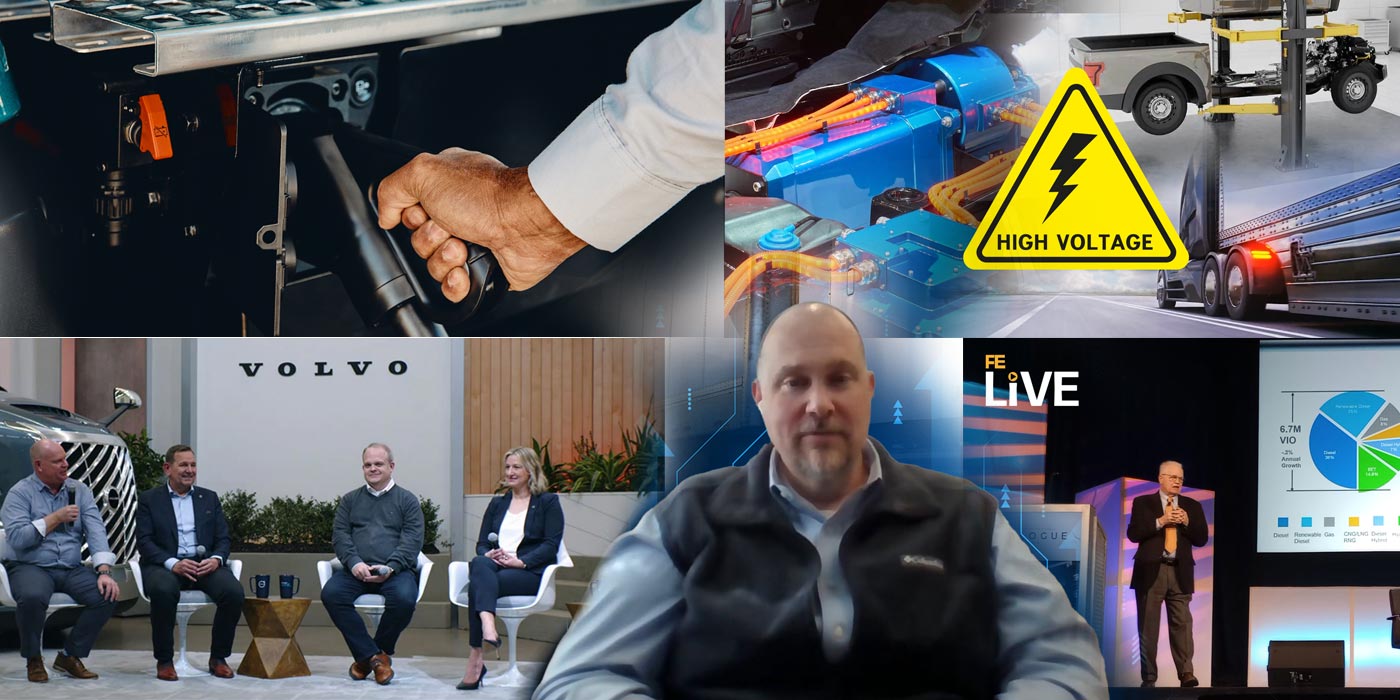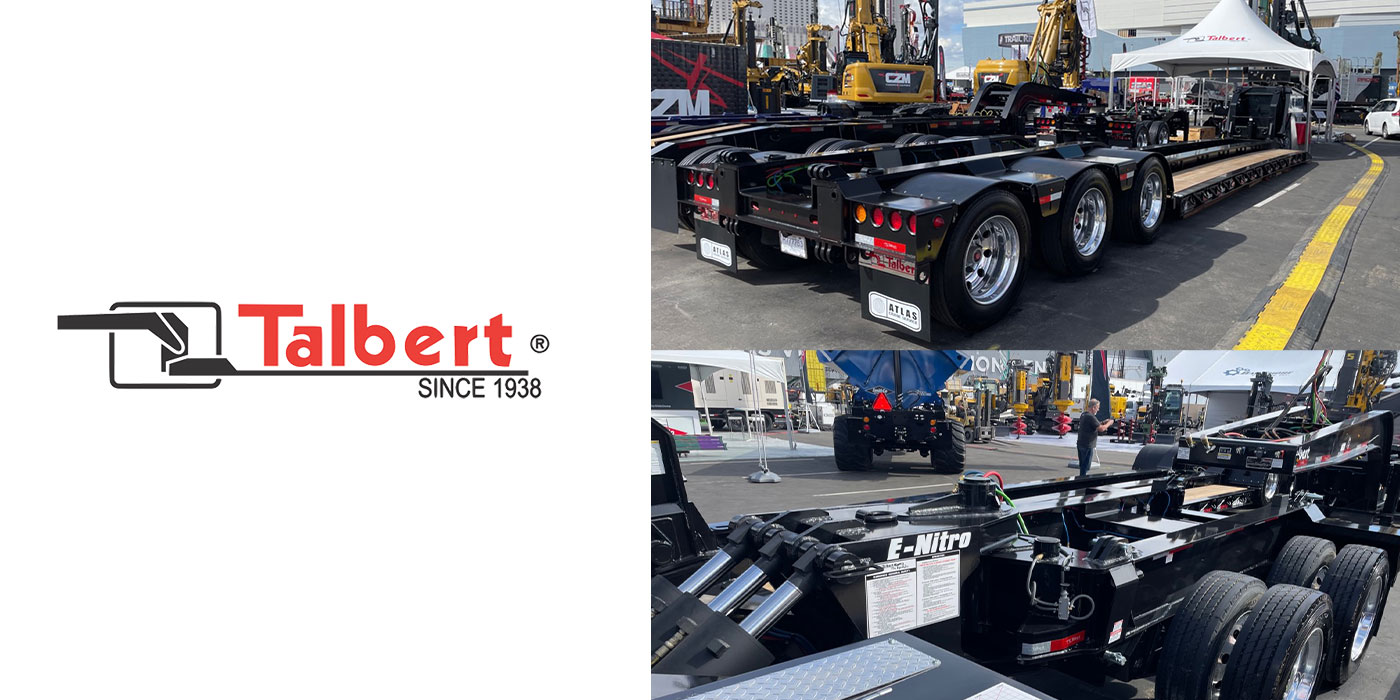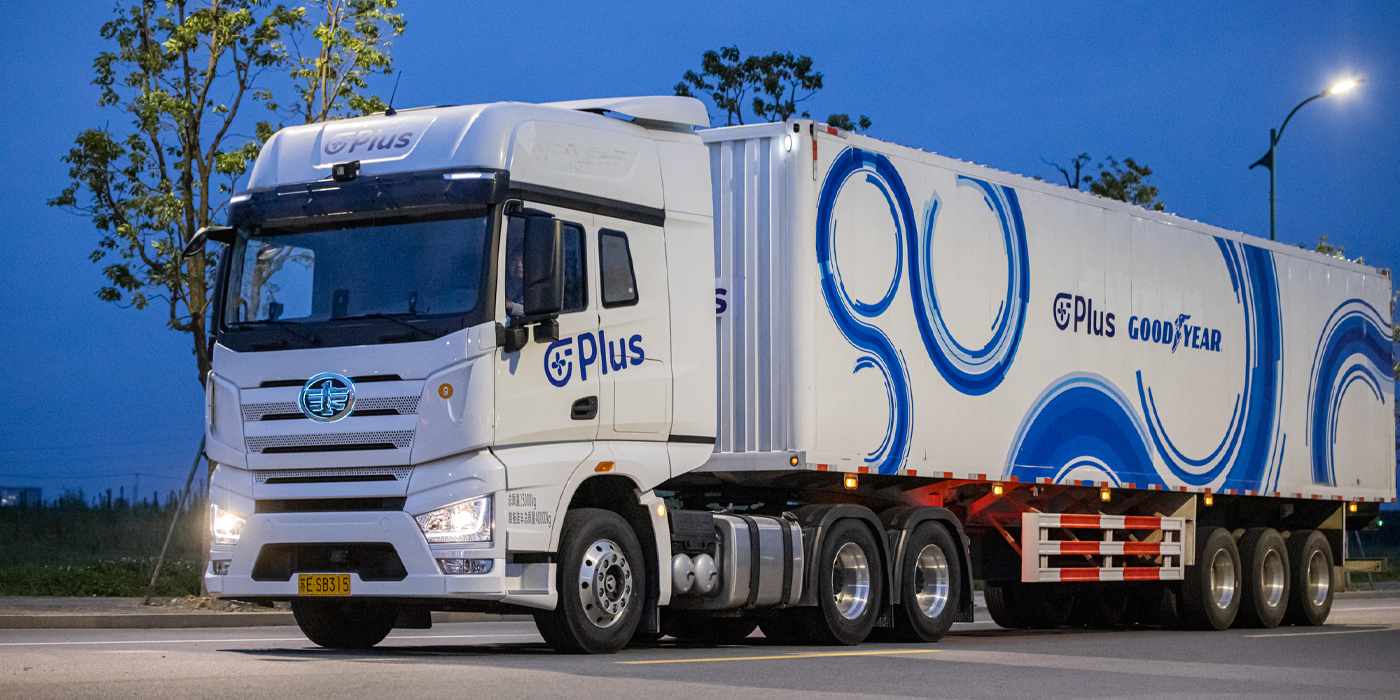According to Dale Tower, vice president of remarketing for AmeriQuest Transportation Services, “The used trucks market continues to flourish, based in large part on the uncertainty in the transportation industry about new engines and the cost of maintaining them. Prices to buy and sell vehicles are near record levels.”
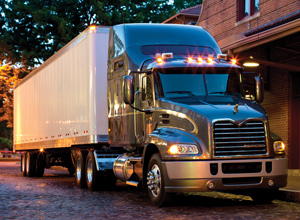
As the demand for late-model, low-mileage used tractors and trucks skyrockets, sales of these vehicles are up more than 50% from levels just one year ago. Back then, freight tonnage was dropping, prices were low, and used trucks were more plentiful. Today, with a shrinking supply, the average retail price for a used truck recently rose to about $40,000, according to ACT Research Co., a publisher of commercial vehicles data.
Tower goes on to say that the most important feature starts with the engine. “There has been great turmoil in the world of truck engines with one EPA re-engineering after another,” he says. “On top of that, a major engine manufacturer recently backed out of the U.S. market. Some new engine manufacturers from a few years ago did not fare well. Some recent entries into the truck engine world have received poor marks, and a couple others are still relatively unknown in regards to their service life reliability. This makes truck service professionals uneasy. Further, used buyers don’t like unknowns. My recommendation for the greatest value when it comes time to remarket these trucks is to go with a known commodity, the engine manufacturers that have served our market the longest and have had the greatest reliability in service and in their used values.”
There are other key component decisions. Automatic transmissions are almost at even value with manual transmissions when it comes time for resell for day cabs, but still a detriment in sleepers. In either case, you will not recover your additional investment for this option. There are very good reasons to spec sleepers with automatic transmissions, from fuel economy to driver training. Make sure your value is collected in your usable life on that equipment, Tower notes.
“Fuel economy issues are here to stay,” he states. “So wind-deflecting fairings and such are a good investment for additional resale value. Aluminum wheels certainly add to the cosmetic presentation of the truck, plus their lower weight provides a fuel economy benefit. Wide-based single tires are still in a jury-is-out status. In general, it is less desirable than duals at resale but I believe that will change as the market becomes more familiar with them. There is some proven fuel economy benefits with these wide-based tires.”
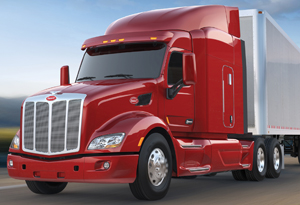
Premium interior packages are expensive and do provide drivers with added pride in their trucks—mostly when it comes to sleepers. In good times, you can obtain a good return for this at resale, but in down markets it is a cost-only conversation, meaning that additional investment is at risk, Tower adds.
Spec’ing for resale
We asked truck OEMs to weigh in on how fleets can best specify vehicles to optimize their return on investment at the time of resale. While the first owner specs the truck to meet the specific needs of his fleet, this often leads to the question of how the truck will be used in its second life—which typically is unknown. Therefore, the specs the secondary market values at a premium are those that make the unit attractive to a variety of applications.
According to TJ Reed, director of product marketing for Freightliner Trucks, “When developing specs, the customer has to weigh the costs and benefits of tuning specs to be more specialized for their individual application versus a more general set of specifications that will be more appealing for the secondary market. For example, for customers that run dedicated lanes in the same geographical region, climate and load configurations, the playbook is a bit more open for them to consider technologies such as 6×2 axle configurations, wide-based tires, and direct drive transmissions to name a few. These technologies provide a proven benefit in weight and fuel savings, and if applied to the proper operating conditions can provide an operational advantage to the fleet that would offset any secondary market impacts.
“Trade cycles certainly provide another variable into the equation and longer cycles provide for a longer time to realize payback of what I would call non-standard specs,” Reed adds. “On the flip side, if your operating lanes are coast-to-coast and border-to-border, fleets need to spec for pulling the Rockies along with flat terrain, which may mitigate some specialized components and as a result, a set of more general specifications such as 15 liter displacement, 13- or 18-speed overdrive transmissions, and 6×4 axle configurations would provide the best application coverage—and as a result, be more attractive in the secondary market.”
With regard to driver comfort and productivity, the industry has done a nice job of including options such as power windows, tilt and telescoping steering wheels, air conditioning and premium infotainment systems into the standard models. For example, in the Freightliner Cascadia, the customer is not even able to spec hand-cranked windows, fixed steering columns, or air conditioning deduct. Including these product delighters into the standard specifications ensures that no matter where the truck spent its first life, it will be well-equipped for the second.
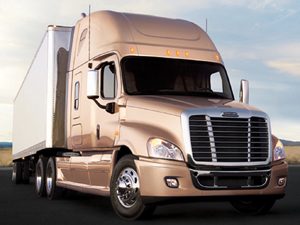
Reed notes that components like wide-based single tires are better suited for the fleet that holds onto its trucks for longer trade cycles, while traditional duals may have more appeal to a second buyer and are a better investment for those fleets with a shorter trade cycle. “If you wanted to optimize the future resale value of a Freightliner Cascadia, we would recommend you spec the following: CA125 72 RR/XT, EVO Aero Package with DD15AT, 500 HP or greater, 13-speed OD manual transmission, Air slide 5th wheel, 10 aluminum wheels and Parksmart,” Reed adds.
Jim Wagner, Peterbilt general sales manager–south, states, “We find that premium specifications in terms of interior and powertrain are appealing to second owners. Our premium Platinum interior is very popular, as are well spec’d engines (higher ratings) and 13+ speed transmissions. Convertible transmissions also can be of benefit. Keeping the truck as flexible as possible in terms of what it could be used for is also a positive step.”
Wagner talks about how his company’s dealers work with customers to determine the best options for their new truck purchases to ensure a good resale price. “Really it’s about experience in the marketplace, understanding the trends and evolving needs of the customers in the used truck market, and knowing what they like when they go looking for a nice pre-owned Peterbilt. Our dealers can certainly help steer our customers in the direction that they know would help them sell the truck if and when it came back to their lots for another potential sale.”
Jerry Warmkessel, Mack highway marketing manager, contends that, “Fleets need trucks that will attract and retain drivers. I believe the Mack mDrive automated manual transmission, as well as air disc brakes, maximize residual value more than any other features. The mDrive allows the driver to keep both hands on the wheel, both eyes on the road and their mind focused on traffic, so it’s a much safer vehicle to drive. The air disc brakes offer shorter stopping distances, which contribute to ease of operation for the driver.”
When it comes to the appeal of specifying trucks that can be converted to day cabs, Warmkessel says, “Several Mack dealers have told us that the ability to offer this feature is critical to their business.”
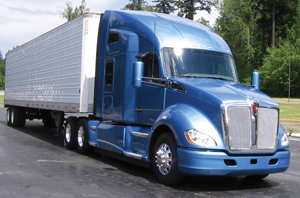
Erik Johnson, Kenworth’s on-highway marketing manager, agrees. He notes that large sleepers and upgraded interior features/trim are appealing to drivers, adding that other features, such as full fairings, sliding fifth wheel, and 13- or 18-speed transmissions, make vehicles more desirable to second owners. However, when it comes to the day cab conversions, he says these used to be a big selling feature, but with the new emissions, there are fewer and fewer customers looking to this as a means for the second life of a sleeper truck. As a higher percentage of the truck population has engines that meet the 2010 emission standards, the number of day cab conversions will be dropping off.
The secondary retail market prefers big bore engines in big sleepers, Reed contends. When it comes to engine displacement, the saying in used trucks is, “There is no replacement for displacement.”Last year, more than 80% of the Cascadia 125 sleepers were sold with Detroit DD15 or ISX 15L power. Not only do the majority of new truck fleets demand 15L engines, but the used market does, as well. Reed notes that the practice of converting sleepers to day cabs will probably go away when more of the 2010 emission compliant engines are available for resale. This is due to the fact that the onboard aftertreatment equipment will make the conversion impossible.
Guy Lemieux, marketing segment manager, Western Star, notes, “When specifying trucks to protect the residual value, fleets should choose a truck brand with a good reputation as the number one factor in resale value. Customers will seek a brand known for both its performance and long-term reliability first, before taking any further steps in the purchase process. In addition, a truck’s performance and wide market appeal strongly factor into its resale value.
He goes on to point out that all Western Star trucks can be equipped with Detroit engines that feature higher horsepower ratings—or the ability to re-program to higher ratings—up to 600 HP and 2,050 ft.-lb. Trucks equipped with 13- and 18-speed transmissions versus a 10-speed also are more appealing to the secondary market. Independent operators traditionally prefer 18-speeds for a smoother driving operation. Also, transmission and clutches should be spec’d to handle the maximum rating of the engine family so it can be up-rated without maintenance or cost concerns. To further protect a truck’s resale value and prevent future maintenance problems, trucks spec’d with common suspension and axle ratings more widely accepted in a variety of applications are more attractive to buyers.
Some fleets are still finding value in converting four- to five-year-old sleeper trucks into day cabs for regional operation. After the conversion, these fleets will keep the truck in operation for several more years. While sleeper-to-day cab conversion ultimately improves the truck’s resale value, it can come with some negative tradeoffs. As sleepers become more integrated to the cab than in the past and the availability of factory conversion kits is limited, companies may find it hard to swallow the cost of the aftermarket conversion. Removing a sleeper also means the fifth wheel location and wheelbase are not optimum for trailer gaps.
All of these things should be considered during the initial spec review with your dealer. Trucks spec’d with removable roof and side fairings better match the secondary customer’s application, making the truck appealing to a wider customer base.
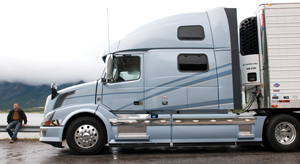
Peterbilt’s Wagner adds that resale value really is the perceived life left in the truck at the same of sale, either to the dealer on a trade or to the second owner. “Our detachable sleeper system allows the flexibility and the possibility of using the truck for far longer throughout its useful life. So, as durable as Peterbilts are, that second, third or even fourth life can all benefit from the flexibility that attribute provides.”
Johnson adds that Kenworth dealers work very close with customers to determine what is right for their business and application. “The fact is, not everyone is looking towards the second life,” he says. “There are plenty of Kenworth customers who buy our trucks and run them for over a million miles. There are others whose trade cycle is 300,000 miles, and these types of customers are much more concerned about resale into the second life. It all depends on the customer and that relationship with their Kenworth dealer.”
Frank Bio, Volvo Trucks product manager—trucks, says, “Volvo equips its dealers with information when they are spec’ing trucks for a first owner, so they always have residual value in mind. A truck’s second owner often has very different interests and values than the first owner. Engine upgradability is one of the most important features for maintaining resale value because higher horsepower remains one of the features used truck buyers want the most. Balancing power and fuel efficiency is important for both new and used truck markets.”
One example from Volvo Trucks, Bio says, is the Volvo D13 engine and Volvo I-Shift transmission. “This powertrain combination can be upgraded to as much as 500 HP and 1,750 ft.-lbs. of torque, providing power without sacrificing fuel efficiency. The I-Shift automated manual transmission has demonstrated increased value on resale for our customers.” Along with horsepower, chrome and polish, aerodynamic devices like full chassis fairings, interior features like Volvo’s driver workstation and adjustable air slide fifth wheel all help vehicles “pop” on the resale line. As concerns about emissions regulations mount, especially in port cities, demonstrating that a truck runs clean is really important for a truck to hold its value.
Bio continues, “Volvo Trucks is in constant communication with dealers, who have very strong customer relationships. Dealers want their customers to be successful and to come back when they are ready to discuss a trade. Through initiatives like our premium dealer program, we provide ongoing support and regular communication so that dealers are equipped with information about what really affects resale value. We also make it a priority to work closely with our sales force to provide quotes guaranteeing residual value. At Volvo, we strive for seamless, responsive communication between us and our dealers so customers get the support they need in every phase of ownership.”
When it comes to dealers working with customers to determine the best options to ensure a good resale price, Mack’s Warmkessel says, “Our dealers advise customers about the most popular options in their geographic area based on the majority of vocations in their area. This may differ widely from the original purchaser.” He adds that purchasers of new trucks never really know what the truck actually costs them per mile to operate until they sell or trade in the asset. The residual value plays a big part in that calculation. “Traditionally, Mack truck models have retained some of the highest trade-in values in the industry,” Warmkessel says.
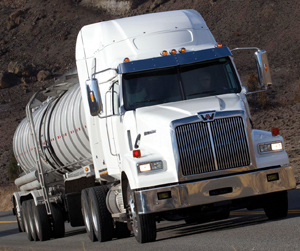
Western Star’s Lemieux adds that another plus is a truck’s ability for personalization and customization, such as chrome accents, visors, large bumpers, plush leather seating—anything that allows the secondary owner to make the truck stand out from the crowd improves its resale value and makes it an attractive option for drivers. As companies face driver shortages, trucks with “bells and whistles” help attract new drivers. Tasteful color choices, a roomy interior and storage space also are extremely important in a truck’s overall appeal. Trucks that withstand the test of time also maintain a higher resale value.
Spec’ing engines
Lou Wenzler, technical sales support director for Cummins Engine Co., says when determining factors for spec’ing engines that are best for resale, “A key is the ability to uprate, or recalibrate to a higher horsepower. For example, a Cummins ISX15 425 can be uprated to a 450 HP rating while an ISX15 485 can be uprated to a 500 HP rating via a recalibration (or ECM reflash).”
Cost of ownership is another thing to keep in mind when specifying engines with an eye toward future resale value. The engine’s reputation for fuel economy, cost to maintain and rebuild when the time comes, and the availability of used truck engine warranty also factor in to used truck buying decisions.
Wenzler goes on to say, “When specifying engines, it is important to specify transmissions and other drivetrain components to match the highest horsepower and torque rating available for uprate. Revisiting the Cummins ISX15 425 HP example, the 425 rating offers 1,550 ft.-lb. of torque and can be upgraded to 450 HP with 1,650 ft.-lb., provided the transmission has capability for 1,650 ft.-lb.”
Proper spec’ing of the entire vehicle, engine and powertrain package for a particular application or duty cycle (e.g. linehaul/interstate operation vs. regional operation) is a key to success for not just the first owner, but also the second (and subsequent) owners. And, factors like an engine’s reputation for reliability and durability, as well as the strength of the manufacturer’s customer support network, also may influence a used truck purchase decision, Wenzler notes.
Kenworth’s Johnson adds that when specifying engine for resale, power ratings are an important consideration. “The engine needs to be spec’d adequately for potential second life buyers. Make sure the potential buyer is able to upgrade the engine to a higher power rating through software alone, or whether it would require expensive hardware changes. These are a couple of the determining factors,” he adds.
Johnson goes on to say “During the spec’ing process, Kenworth dealers work very closely with our customers to spec the entire powertrain. You cannot spec items in a vacuum. Usually, the biggest factor is torque as the clutch, transmission and axles all have specified torque ratings. Beyond that, customers are looking for the engine-transmission-axle-wheel combination that will provide the performance (either fuel economy, pulling power or both). It is very important to look at the powertrain as a whole when spec’ing any of the components.”
David McKenna, Mack director of powertrain sales and marketing, says, “Smart fleet executives who specify engines for fuel economy for their initial use look for horsepower and torque upgradability in the aftermarket. The vast majority of 80,000-lb. GCW interstate operations require about 400 HP, plus or minus 25 HP. There is a great deal of value in being able to upgrade to greater than 450 HP for resale purposes. This may not be required for resale, but does provide an option for the seller and/or the secondary buyer.”
McKenna suggests that fleet managers take into consideration the importance of matching engines to other drivetrain components. He cautions, “Make 100% sure that the entire drivetrain and cooling systems are capable of handling the additional power and torque with the capacity to adequately cool the additional rejected heat from the higher power engine and transmission lube cooling loads.”
The advantages of specifying more integrated drivetrains are that they can be easier to upgrade. McKenna notes that for Mack, this is because the peak torque of the MP8 engine is 1,760 lbs. and the mDrive transmission is rated to 1,920 lbs. There are no restrictions when upgrading from a 1,460-lb. peak torque rating.
“Speaking of the mDrive, it also can be programmed for various duty cycles,” McKenna adds. “The original customer may have demanded optimal fuel economy performance, whereas the resale customer may be seeking a high-powered performance mode. So the value that integration supplies is not limited to customer one—it continues on down the line.”
Kenworth’s Johnson agrees, “Integrated powertrain components provide customers with benefits of improved fuel economy, better service, etc., whether in the first life of the truck or the second. Kenworth, for example, has worked extensively to incorporate the PACCAR by Eaton transmissions with our PACCAR engines to improve customer satisfaction through a Kenworth-only powertrain configuration.”
Daimler Trucks North America, makers of Freightliner trucks, recently announced a proprietary automated manual transmission and axle, which means the company is poised to couple those components with its Detroit series engines to offer fully-integrated powertrains for the North America market. Freightliner’s Reed notes that while automated manual transmissions currently do not hold great appeal for the secondary market, he sees that changing. He predicts that secondary buyers are going to be interested in optimizing fuel consumption.
Air suspensions add value for resale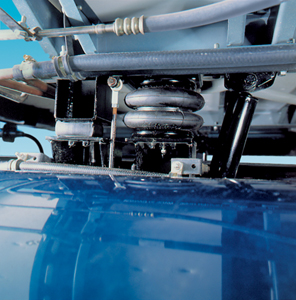
According to Dave Vanette, manager of new business development for Gireston Industrial Products Co., air suspensions are the best features to specify on tractors and trailers to make them the most profitable for resale. “An air suspension system can be one of the most beneficial and profitable features to specify on tractors and trailers. Today, most on-highway Class 8 trucks come standard with a primary suspension and cab air suspension, as well as an air-suspended seat. It is widely recognized in North America and Europe that this enhances driver comfort, leading to increased driver retention. Also, it extends the life of a vehicle by reducing the impact and vibration. “
He goes on to say that owners and operators can take it one step further by specifying a front-air suspension, which typically warrants better payout at trade-in time. This same reasoning also applies to air suspension in trailers. Not only do owners get better life out of the equipment, but the trailer is more versatile for any new application going forward, which helps increase its resale value at trade-in time. A trailer air suspension is typically spec’d for hauling delicate or very expensive equipment. Today, an air suspension also can be spec’d for severe-duty applications. Previously, a leaf or rubber-sprung suspension would typically have been specified for this type of vocational application, Vanette adds.
Buying trailers with resale in mind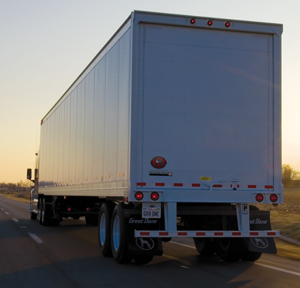
When it comes to specifying trailers for resale, the trailer experts at Great Dane say fleets should look for components that ensure the service life of the trailer. As an example, Great Dane’s Champion dry freight vans, which combine unique design and proven materials for new levels of strength and corrosion resistance to the rear frames, are a prime example of top quality features that provide the durability fleets need. In addition, the Champion dry freight vans are equipped with an EnduroGuard rear frame, now standard with both swing and roll-up rear doors, which utilize galvaneal and stainless steel components, boosting quality and durability to an even higher level. These fully-built rear frames on Champion dry freight vans are coated with an epoxy primer and a urethane topcoat to provide a smooth appearance through out the years of service so they are still appealing to the second buyer.
“Fleets look at the total cost of ownership when buying trailers,” says Dave Gilliland, vice president of branch sales for Great Dane. “Name brand, properly spec’d trailers with good maintenance records will obtain higher values in the used market. The age of the trailer in the used market will have an impact, particularly if they are considered ‘late model.’”
Great Dane says it has long paid attention to detailed design elements of its trailers to boost durability, which in turn adds to longevity/higher resale value. Those elements include high quality flooring, proper insulation, strong interior linings, durable bottom and top rails, good lighting systems and top quality landing gear. In addition, the trailer maker offers CorroGuard with Technology by GatorHyde, which is designed to fight corrosion. This polyurea elastomeric coating was developed specifically for trailer underbody protection from rock and stone impingement and chemical resistance to current de-icing chemicals. This impact-resistant barrier is designed to withstand de-icing chemicals, as well as road debris, climate fluctuations, and ice and snow.
Well-maintained trailers sell well
Jeff Weber, vice president of sales and marketing at Ervin Equipment, a Wabash National Trailer dealer, says when it comes to specifying trailers for resale, “It comes down to maintenance. Trucking companies track maintenance on their trucks and trailers. When they start to see that maintenance costs are climbing, they start looking to trade, upgrade or buy new. They know that there is less maintenance or less expense in a newer trailer. “
He goes on to say that most companies have the ability to track from day one all factors of maintenance, including parts, labor, downtime and loss of revenue. When they do decide to move that equipment and sell it, the residual value comes into play at that point. Some of the key points for second buyers of trailers include having to update, replace or fix the interior lining of the sheet and post type trailer, states Weber. He points out that with a Wabash DuraPlate trailer, very little maintenance is involved in getting that trailer up to trade value. “It would be standard moving components: tires, brakes, etc. that require the most investment,” he says.
“We also see the doors of these van trailers replaced on an ongoing basis,” Weber notes. “Up until Wabash came out with a composite door, the replacement of doors was a highly expensed component to a trailer. They were made of plywood and they would get wet, rot and would have to be replaced every 7-10 years. Wabash introduced the DuraPlate (composite) door and that has eliminated the need to replace the door for basically the lifetime of the trailer.”
Trailers can be adapted for second owners in several ways. At Ervin, Weber says, “We’ll change the door configuration from a swing door to a roll-up door. We might change the logistics—the cargo containment system—of it. We see a lot of that get changed or added in a trailer.”
Best paint finishes garner top dollar
Tips on preparing a commercial vehicle for resale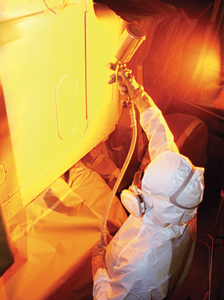
When preparing a vehicle for resale, most customers are interested in quickly providing a nice finish while managing their costs, according to Jenifer Wirth, PPG brand manager, Commercial Segments. “They want it to look its best without breaking the bank.”
Paying attention to surface prep and choosing the right coating system can help achieve the desired end result. Clearly, to get the best end appearance, performing the necessary preparation up front is important. Otherwise, applying a glossy topcoat will only amplify the defects below. Important prep work would include sanding the unit for as uniform a surface as possible, any necessary body repair work, and applying a protective primer over any bare metal or body fillers.
“When choosing a topcoat for resale, efficiency and value are generally key drivers,” Wirth notes. “Often a ‘value-type’ single-stage product is used, although some colors may require a basecoat/clearcoat system. We would recommend PPG’s Delfleet Essential brand, which is ideal for rebranding, refurbishment or resale opportunities. The Delfleet Essential system is easy to use, productive and provides a like-new appearance at a cost that is significantly less than premium brands. Additionally, it offers both single-stage and basecoat options to cover whatever type of job is needed.”
Web assistance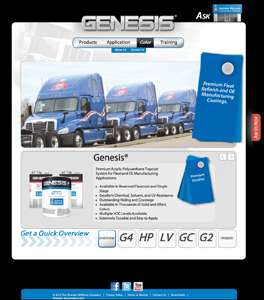
To help fleet managers find the right finish for vehicles, Sherwin-Williams Automotive Finishes has launched a new, informative website (http://genesis.sherwin-automotive.com) to assist fleet refinishers find information, specification or application and training guidelines about the latest in coatings and finishes.
Joseph Krebs, director of marketing, commercial segments for Sherwin-Williams Automotive Finishes, notes, “This new site is easy to use and allows users to see firsthand how our Genesis primers and topcoats offer outstanding performance and appearance. These products deliver productivity and profitability and are a complete solution for their fleet and manufacturing needs.
“In addition, the new site provides more extensive application, color and training data for our audience. This includes providing information and regulatory documents that are easily available,” he added.

